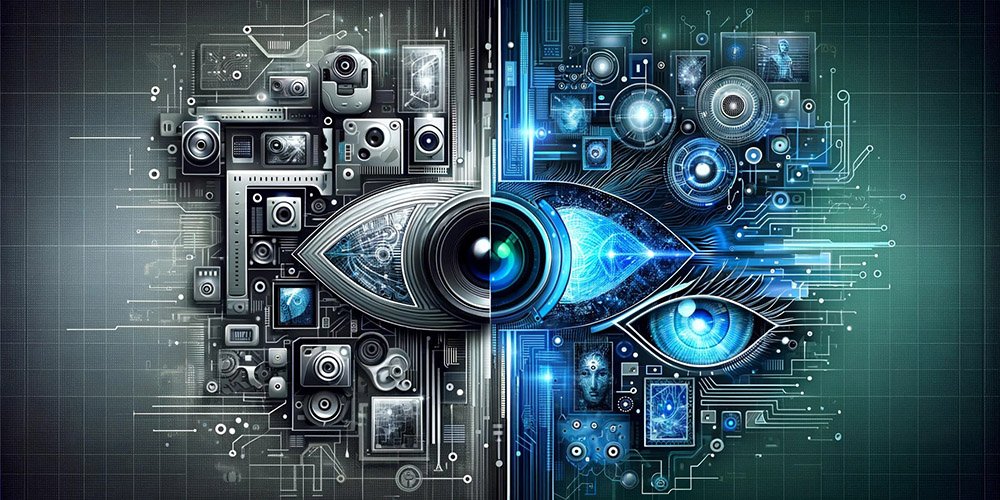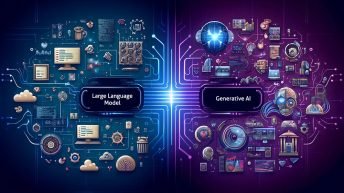In recent years, computer vision and machine learning have become pivotal in the technological landscape, driving innovations across various industries. Both fields have made remarkable contributions to advancements in artificial intelligence, enhancing the capabilities of systems to perform tasks that previously required human intelligence.
Understanding the differences and synergies between computer vision and machine learning is crucial for appreciating their individual and combined impacts on technology and society.
What is Computer Vision?
Computer vision is a field of artificial intelligence focused on enabling machines to interpret and understand visual information from the world.
It involves the development of algorithms and systems that can process, analyze, and make sense of images and videos. The fundamental goal of computer vision is to replicate the human visual system’s ability to recognize and interpret visual stimuli.
Historical Development and Key Milestones
Computer vision has evolved significantly since its inception in the 1960s. Early efforts were primarily academic, aiming to understand how machines could mimic human visual perception. The field gained momentum in the 1980s and 1990s with the advent of digital imaging and advances in computational power.
Key milestones include the development of edge detection algorithms, the introduction of convolutional neural networks (CNNs) in the late 1990s, and the rapid progress in deep learning techniques over the past decade.
Common Applications
- Facial Recognition: Used in security systems, smartphones, and social media platforms to identify individuals.
- Autonomous Vehicles: Enables self-driving cars to perceive their environment, detect obstacles, and navigate safely.
- Medical Imaging: Assists in diagnosing diseases by analyzing medical images such as X-rays, MRIs, and CT scans.
What is Machine Learning?
Machine learning is a broader field within artificial intelligence that focuses on developing algorithms and models that enable computers to learn from and make predictions or decisions based on data.
Unlike traditional programming, where explicit instructions are given, machine learning systems improve their performance through experience and data-driven learning.
Historical Background and Evolution
The roots of machine learning trace back to the mid-20th century with the development of early neural networks and statistical models.
The field has seen significant advancements over the decades, with major breakthroughs in the 1990s and 2000s, including the introduction of support vector machines, decision trees, and ensemble methods.
The recent surge in machine learning can be attributed to the availability of large datasets, advancements in computing power, and the rise of deep learning techniques.
Common Applications
- Recommendation Systems: Used by platforms like Netflix, Amazon, and YouTube to suggest content based on user preferences and behavior.
- Fraud Detection: Employed by financial institutions to identify and prevent fraudulent transactions using pattern recognition.
- Predictive Analytics: Utilized in various industries to forecast trends, customer behavior, and market dynamics based on historical data.
Also read: Large Language Model (LLM) vs. Generative AI: How Do They Differ?

Core Differences Between Computer Vision and Machine Learning
Focus and Scope
Computer Vision: Computer vision specializes in interpreting and understanding visual data. Its primary focus is on enabling machines to process and analyze images and videos to extract meaningful information. The field aims to replicate the human ability to see and comprehend visual input, which is critical for applications like facial recognition, autonomous driving, and medical imaging.
Machine Learning: Machine learning is a broader field that encompasses various types of data and learning algorithms. Its primary goal is to develop models that can learn from data and make predictions or decisions without being explicitly programmed. While computer vision is a subfield of machine learning when it involves visual data, machine learning itself spans a wide range of applications, from natural language processing to predictive analytics and beyond.
Techniques and Tools
Computer Vision:
- Image Processing Techniques: These include methods for enhancing, filtering, and transforming images to improve their quality or to highlight specific features. Techniques like edge detection, histogram equalization, and image segmentation are fundamental in this domain.
- Convolutional Neural Networks (CNNs): CNNs are a type of deep learning model particularly well-suited for processing visual data. They automatically and adaptively learn spatial hierarchies of features from images, making them highly effective for tasks like image classification, object detection, and facial recognition.
Machine Learning:
- Diverse Algorithms: Machine learning employs a wide array of algorithms tailored to different types of problems. These include:
- Decision Trees: Used for classification and regression tasks, providing a clear decision-making framework.
- Neural Networks: Model complex patterns and relationships in data, with deep learning being a specialized subset involving multiple layers.
- Clustering: Groups data points into clusters based on their similarities, useful for tasks like customer segmentation and anomaly detection.
Data Types
Computer Vision: Primarily deals with images and videos. The data in computer vision is typically unstructured, comprising raw pixel values from images or frames from videos. This visual data is processed and analyzed to extract features such as edges, textures, and shapes, which are then used for higher-level understanding tasks.
Machine Learning: Handles both structured and unstructured data, including text, numerical data, and images. Structured data involves well-defined fields and formats, such as databases and spreadsheets. Unstructured data, like text and images, requires more sophisticated processing techniques to extract meaningful patterns and information. Machine learning algorithms can work with various data formats, making the field highly versatile and applicable to a wide range of problems.
How Computer Vision Utilizes Machine Learning
Machine learning algorithms play a crucial role in advancing computer vision tasks. By leveraging these algorithms, computer vision systems can automatically learn from data, improving their accuracy and efficiency in recognizing and interpreting visual information.
How Machine Learning Algorithms Are Employed in Computer Vision Tasks
Machine learning provides the foundation for developing models that can learn patterns and features from visual data. This process typically involves training algorithms on large datasets of labeled images or videos, enabling the models to identify and classify objects, segment images, and detect specific features.
Examples:
- Object Detection: Machine learning models are trained to identify and locate objects within an image. This involves using algorithms like YOLO (You Only Look Once) and R-CNN (Region-based Convolutional Neural Networks) that can process images in real-time and detect multiple objects with high accuracy.
- Image Classification: Convolutional Neural Networks (CNNs) are widely used for classifying images into predefined categories. For example, a CNN trained on a dataset of animal images can classify whether an image contains a cat, dog, or bird.
- Image Segmentation: This task involves partitioning an image into multiple segments or regions, each corresponding to different objects or areas. Techniques like Fully Convolutional Networks (FCNs) and U-Net architectures are employed to achieve precise segmentation, useful in applications like medical imaging and autonomous driving.
Importance of Deep Learning in Advancing Computer Vision
Deep learning has revolutionized computer vision by enabling the development of highly accurate and efficient models. Deep learning models, particularly Convolutional Neural Networks (CNNs), have demonstrated exceptional performance in various computer vision tasks.
Their ability to automatically learn hierarchical features from raw data has significantly improved the capabilities of computer vision systems, making them more robust and scalable.
Overlapping Areas and Synergies
The synergy between computer vision and machine learning has led to numerous interdisciplinary projects and research areas that combine the strengths of both fields. These collaborative efforts have resulted in innovative technologies and applications that leverage the power of visual data analysis and predictive modeling.
Examples of Technologies That Integrate Computer Vision and Machine Learning:
- Augmented Reality (AR): AR applications use computer vision to recognize and track real-world objects, while machine learning algorithms enhance the user experience by providing context-aware interactions and predictions.
- Smart Surveillance Systems: These systems employ computer vision for real-time video analysis, detecting and identifying objects and activities. Machine learning algorithms are then used to analyze patterns and predict potential security threats, enhancing the overall effectiveness of surveillance.
Examples
Real-world examples illustrate the powerful combination of computer vision and machine learning in various industries, showcasing their practical applications and benefits.
Autonomous vehicles rely heavily on computer vision to perceive their environment, using cameras and sensors to capture visual data. Machine learning models process this data to detect objects, identify lane markings, and understand traffic signals.
Additionally, machine learning algorithms are used for decision-making, helping the vehicle navigate safely and efficiently by predicting the behavior of other road users and optimizing driving strategies.
Healthcare Applications Combining Imaging Techniques with Predictive Models for Diagnosis
In healthcare, computer vision is employed to analyze medical images such as X-rays, MRIs, and CT scans. Machine learning models are trained on large datasets of medical images to identify patterns and anomalies associated with various diseases.
For example, deep learning algorithms can detect early signs of cancer in radiology images, aiding doctors in making accurate diagnoses and improving patient outcomes. Combining imaging techniques with predictive models enhances diagnostic accuracy and enables personalized treatment plans based on individual patient data.
Challenges and Future Trends
Current Challenges in Computer Vision and Machine Learning
Despite significant advancements, computer vision and machine learning face several challenges:
- Data Privacy: The use of large datasets, especially those containing personal information, raises privacy concerns. Ensuring that data is collected, stored, and processed in a manner that respects user privacy is crucial.
- Algorithm Bias: Machine learning models can inadvertently learn and propagate biases present in the training data. This can lead to unfair and inaccurate predictions, particularly in sensitive applications like hiring, law enforcement, and healthcare.
- Computational Requirements: Training complex machine learning models, especially deep learning networks, requires substantial computational power and resources. This can be a barrier for organizations with limited access to high-performance computing infrastructure.
Emerging Trends
- Transfer Learning: This technique involves taking a pre-trained model on a large dataset and fine-tuning it for a specific task with a smaller dataset. Transfer learning reduces the time and computational resources required for training, making it accessible for various applications.
- Federated Learning: Federated learning enables models to be trained across multiple decentralized devices or servers holding local data samples, without exchanging them. This approach enhances data privacy and security while still benefiting from collaborative learning.
- Advancements in Neural Network Architectures: Innovations in neural network design, such as transformer models and graph neural networks, are pushing the boundaries of what is possible in both computer vision and machine learning. These architectures offer improved performance and new capabilities for handling complex data.
Future Directions and Potential Breakthroughs
Looking ahead, several areas hold promise for significant advancements in computer vision and machine learning:
- Explainable AI: Developing models that can provide clear and understandable explanations for their predictions is crucial for building trust and ensuring responsible AI use.
- Integration with Other Technologies: Combining computer vision and machine learning with technologies like natural language processing, robotics, and Internet of Things (IoT) will create more sophisticated and capable systems.
- Sustainability and Efficiency: Efforts to reduce the environmental impact of training large models through more efficient algorithms and hardware innovations will be essential for the sustainable development of AI technologies.
Conclusion
Computer vision and machine learning are distinct yet interconnected fields within artificial intelligence. Computer vision focuses on interpreting visual data, while machine learning encompasses a broader range of data types and learning algorithms. Both fields leverage advanced techniques like deep learning to drive innovations across various industries.
The synergy between computer vision and machine learning has led to remarkable applications in autonomous vehicles, healthcare, augmented reality, and more. However, challenges such as data privacy, algorithm bias, and computational requirements must be addressed to ensure responsible and equitable use of these technologies.
Emerging trends like transfer learning, federated learning, and advancements in neural network architectures are paving the way for future breakthroughs. As these fields continue to evolve, their impact on technology and society will only grow.




Add comment